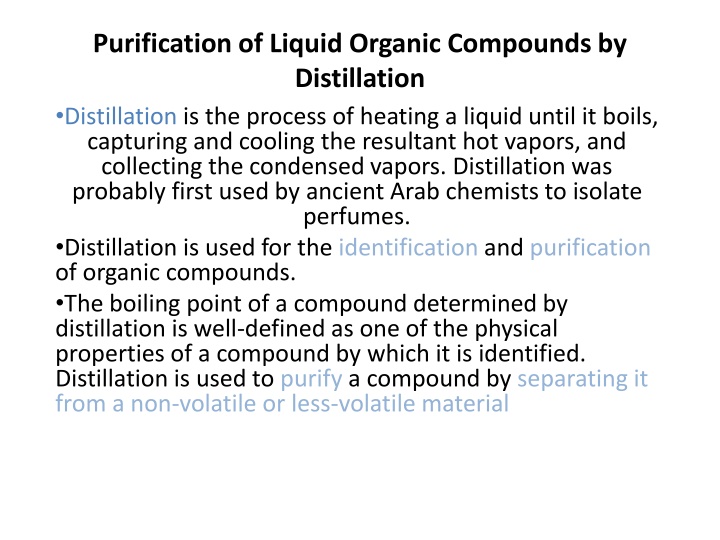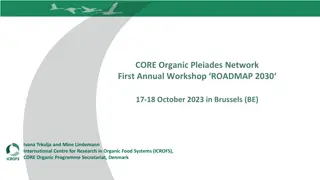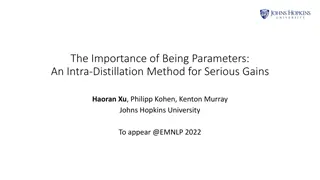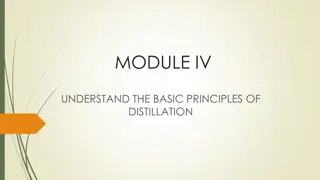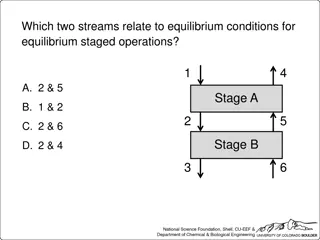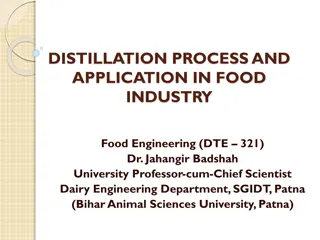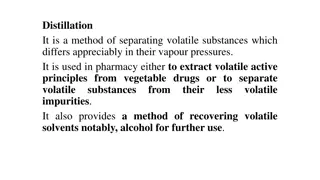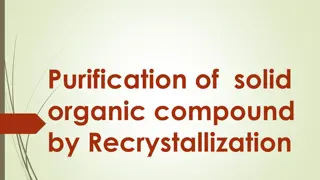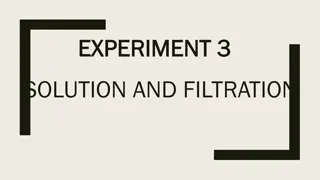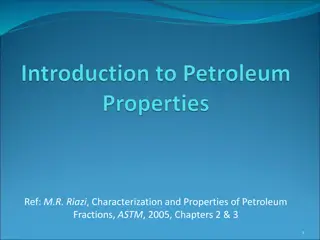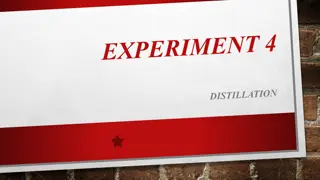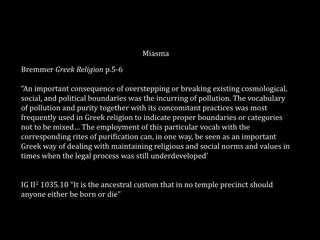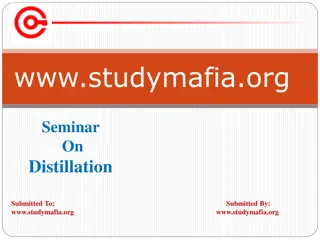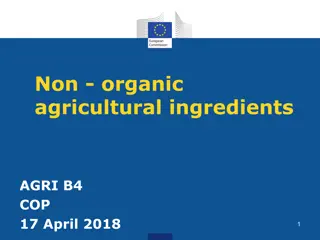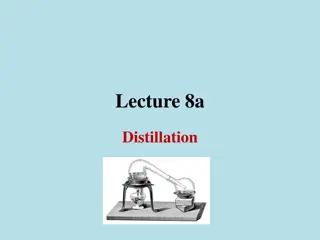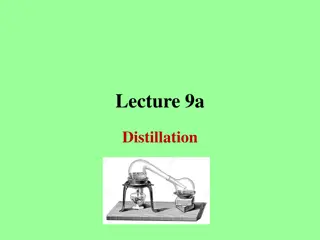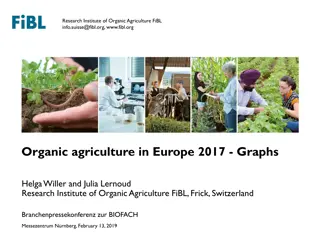Liquid Organic Compound Purification by Distillation
Distillation is a process used by ancient chemists for purifying organic compounds based on their boiling points. It separates compounds with different boiling points into individual components, aiding in compound identification and purification. Different types of distillation such as simple, fractional, vacuum, and steam distillation are employed for this purpose, each method offering specific advantages. The technique relies on the principle that compounds with higher vapor pressures boil at lower temperatures, facilitating their separation.
Download Presentation

Please find below an Image/Link to download the presentation.
The content on the website is provided AS IS for your information and personal use only. It may not be sold, licensed, or shared on other websites without obtaining consent from the author.If you encounter any issues during the download, it is possible that the publisher has removed the file from their server.
You are allowed to download the files provided on this website for personal or commercial use, subject to the condition that they are used lawfully. All files are the property of their respective owners.
The content on the website is provided AS IS for your information and personal use only. It may not be sold, licensed, or shared on other websites without obtaining consent from the author.
E N D
Presentation Transcript
Purification of Liquid Organic Compounds by Distillation Distillation is the process of heating a liquid until it boils, capturing and cooling the resultant hot vapors, and collecting the condensed vapors. Distillation was probably first used by ancient Arab chemists to isolate perfumes. Distillation is used for the identification and purification of organic compounds. The boiling point of a compound determined by distillation is well-defined as one of the physical properties of a compound by which it is identified. Distillation is used to purify a compound by separating it from a non-volatile or less-volatile material
Distillation is used to purify a compound by separating it from a non-volatile or less-volatile material When different compounds in a mixture have different boiling points, they separate into individual components by distillation. The boiling point is the temperature at which the vapor pressure of the liquid phase of a compound equals the external pressure acting on the surface of the liquid. The external pressure is usually the atmospheric pressure.
For instance, consider a liquid heated in an open flask. The vapor pressure of the liquid will increase as the temperature of liquid increases, and when the vapor pressure equals the atmospheric pressure, the liquid will boil. Different compounds boil at different temperatures because each has a different, characteristic vapor pressure: compounds with higher vapor pressures will boil at lower temperatures
Types of distillation Simple Distillation Fractional Distillation Vacuum distillation Steam distillation
Simple Distillation It is used for separating liquids having boiling points differing by 50 degree. The liquid having the lower boiling point distills over first, and the other liquid component it is left behind. In this process, vaporization and condensation occur side by side.
Fractional Distillation: The only difference between this system and that of a simple distillation system is the inclusion of a fractionating column between the round bottom and the Y- adaptor. The fractionating column is regular condenser filled with glass beads.
Fractional distillation is the separation of a mixture of multiple components into its various fractions according to the difference in their boiling temperatures. This is the process used in the separation of Crude Oil into useful fractions and other mixtures like light Gases (Methane and Ethane), Naphtha, LPG, Gasoline, Kerosene, Diesel, Fuel Oils, Heavy fuel, Lube oils, Waxes and asphaltic products.
Vacuum distillation Vacuum distillation is distillation at a reduced pressure. Vacuum distillation is used to distill compounds that have a high boiling point or any compound which might undergo decomposition on heating at atmospheric pressure.
Steam distillation Steam distillation is a special type of distillation for temperature sensitive materials which are immiscible with water, volatile in steam and have high vapor pressure at the boiling temperature of water like natural aromatic compounds. Eucalyptus oil and orange oil are obtained by this method on the industrial scale.
Procedure The impure liquid or a mixture of two liquids is taken in a distillation flask fitted with a thermometer and a condenser. The flask is heated on a sand bath, on wire gauze or in a water bath. The more volatile liquid, i. e. the one having a lower boiling point, boils first and the vapors distill over from the outlet near the top. These vapors pass through the condenser and get condensed into the liquid. This condensed liquid collected in a receiver is called the distillate. The less volatile liquid, i.e. the one having a higher boiling point, gets left behind in the distillation flask. To avoid bumping of liquid, a few boiling stones are placed in the distillation flask.
